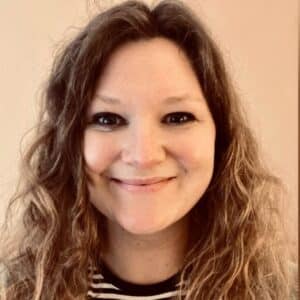
Why Chest Infections and Coughs Flare in Autumn and Winter – And How Homeopathy Can Help
Why Chest Infections and Coughs Flare in Autumn and Winter

As homeopaths, we are trained to observe, to analyse, and to select remedies that resonate with the individual’s totality. Yet despite all our training, experience, and knowledge, one truth remains: healing is never linear. It cannot be fully predicted or forced. Every patient’s journey is a voyage, and as practitioners, our role is not to command the ship but to travel alongside, observing, listening, and responding.

Homeopath and CHE Community Manager
Imagine your patient’s healing as a small boat on the open sea. The sails are set, the wind catches, and the vessel begins its journey. But the sea is not calm or consistent. The winds shift. Currents tug in unexpected directions. Storms rise and settle. Obstacles appear suddenly; rocks, waves, and hidden shoals that test both boat and sailor. The journey is alive, constantly shaped by forces both seen and unseen.
One of the most challenging aspects of clinical practice is witnessing a patient’s symptom pattern change. Perhaps a new stress emerges; a job loss, a family challenge, or an emotional trigger.
Sometimes long-standing issues resurface, or previously unnoticed patterns come to the forefront. For many practitioners, this can feel unsettling. We may worry that the remedies we chose are “not working” or that we’ve made a misjudgment.
But these changes are not failures; they are information. They are the tides of the patient’s internal and external world, showing us how the healing process is unfolding. In homeopathy, a remedy is like adjusting the sails of the boat.
It initiates movement and change, but the direction the patient takes depends on their constitution, life history, and current circumstances. Some shifts are subtle, almost imperceptible. Others arrive in leaps, surprising both patient and practitioner alike.
If there is one skill that challenges even the most experienced homeopath, it is patience. The temptation to act, to prescribe again, or to “fix” a situation is strong, especially when a patient’s symptoms shift or intensify.
Yet one of the greatest gifts we can offer is the ability to hold space, to observe without interfering, and to trust the patient’s own healing intelligence.
Patience is not passivity. It is active engagement through careful observation and reflection. It means tracking subtle changes in energy, noticing emotional or physical shifts, and appreciating the ways in which a patient’s system is responding to both life events and remedies.
Knowing when to wait and when to act is a subtle art. Prescribing too early can stop natural healing, while waiting too long can mean missing chances to guide the process. Cultivating this timing is a lifelong skill for practitioners.
To “follow the patient” means acknowledging that no two healing journeys are the same. Each person carries a unique history, a unique constitution, and a unique set of challenges. Some patients drift forward gently, experiencing small, steady improvements. Others surge unpredictably, with leaps and transformations that cannot be anticipated.
When we stand back and follow, we allow the patient’s own rhythms to guide the journey. We respond to the signals their body, mind, and life present, rather than trying to impose a rigid protocol or preconceived expectation.
This approach requires trust; trust in the patient’s inner intelligence, trust in the remedies we select, and trust in the unfolding of the process itself.
Ultimately, homeopathy teaches us that healing is not about following a set route. It is about reading the winds, feeling the currents, adjusting the sails, and respecting the patient’s journey. Our role is to notice, to support, and to accompany; not to dictate.
Healing is not a straight line. It is the patient’s ocean, their winds, their tides. Sometimes the waters are calm and progress is smooth. Other times, the journey is turbulent and unpredictable. Yet when we cultivate patience, attentiveness, and flexibility, we create the conditions for true transformation.
As practitioners, our greatest skill is often restraint and observation; knowing when to act, and knowing when to simply hold space for the patient to navigate their own course. In doing so, we honour the individuality of each healing voyage, and we witness the profound intelligence of life unfolding.
If you found this post helpful, you’ll love what’s waiting for you inside CHE Pro; our professional membership for homeopaths who want to keep growing, learning, and feeling supported in practice.
Whether you’re newly qualified or decades into practice, CHE Pro is your home for ongoing support and brilliant homeopathic education.
We’d love to welcome you in.
Disclaimer
The content shared here is intended for informational purposes only and should not be considered a replacement for professional medical advice, diagnosis, or treatment from a qualified and licensed healthcare provider. The views and opinions expressed in this presentation are those of the presenter and do not necessarily represent those of CHE or any affiliated organizations.

Why Chest Infections and Coughs Flare in Autumn and Winter

30C or 200C? How to Know What to Do Next

Healing is a Voyage: Following the Patient, Not a Protocol